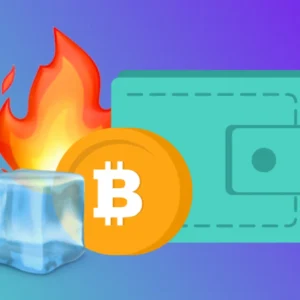How Crypto Arbitrage Works — And Why Traders Can’t Stop Talking About It
So, you’ve stumbled across the term crypto arbitrage and are wondering what on earth it actually means? You’re not alone. This buzzword pops up all over trading forums, YouTube videos, and Twitter threads—but few explain it in a way that really clicks. Let’s break it down without all the jargon.
At its core, crypto arbitrage is a trading strategy where someone buys a cryptocurrency at a lower price on one exchange and then sells it on another exchange where the price is higher. Sounds simple, right? And, in a way, it is… but there’s more to the story.
What Makes it So Appealing?


One word: opportunity.
Crypto markets aren’t as mature or synchronized as traditional financial systems. Prices for Bitcoin or Ethereum—or even smaller altcoins—can vary by a few bucks (sometimes more) between exchanges. This price difference, known as a “spread,” creates a window for traders to swoop in, make a quick trade, and walk away with a profit.
Of course, timing is everything. Arbitrage traders have to move quickly before that spread disappears. We’re talking seconds, sometimes milliseconds. That’s why many use bots or algorithms to scan prices across multiple platforms 24/7.
But don’t think this is some guaranteed-money hack. Fees, delays, and liquidity issues can chew into your profits—or worse, turn a win into a loss. Still, for some, the thrill is worth it.
Types of Crypto Arbitrage


Not all arbitrage is created equal. Here are the most common flavors:
1. Spatial Arbitrage (aka Inter-Exchange Arbitrage)
This is the classic buy-low-sell-high situation between two different exchanges. Say Bitcoin is $40,100 on Binance and $40,200 on Coinbase. A trader could buy on Binance and sell on Coinbase, pocketing the $100 difference—minus fees.
2. Triangular Arbitrage
This one’s a bit trickier. It happens on the same exchange by trading between three different currencies. For example, you might start with BTC, trade it for ETH, then convert that ETH back into USD—and somehow end up with slightly more money than you started with. Magic? Not quite, but close.
3. Decentralized Arbitrage
With DeFi (decentralized finance) platforms, there’s often even more volatility in pricing. Some arbitrage traders jump between centralized exchanges (like Kraken) and DEXs (like Uniswap or PancakeSwap) to exploit those differences. Riskier? Maybe. But potentially more profitable, too.
Is it Still Worth It in 2025?

That’s the million-dollar question.
Arbitrage opportunities were more abundant back in crypto’s earlier days—before bots took over and exchanges started tightening spreads. These days, profits are thinner, and competition is fierce. You’ll need lightning-fast execution, a decent bankroll, and a good understanding of market mechanics.
And let’s be honest: arbitrage isn’t passive income. It’s active, high-intensity, sometimes stressful trading. Plus, factor in fees, potential transfer delays, and network congestion, and it’s not always the smooth sailing people on Reddit might suggest.
But for those who’ve done their homework, and don’t mind the hustle? Crypto arbitrage can still be a sharp tool in the box.
Getting Started with Crypto Arbitrage

If you’re itching to try this out, here’s a short checklist:
- Pick your exchanges. Start with two or three reputable platforms. Think Binance, Kraken, Coinbase, KuCoin.
- Understand the fees. Transaction fees, withdrawal fees, deposit fees—they add up fast.
- Use monitoring tools. Platforms like CoinMarketCap and CoinGecko can show real-time price spreads. Some traders even build their own bots.
- Start small. No need to go all-in from day one. Test the waters with smaller trades before scaling up.
Oh—and don’t forget to check local regulations. Some countries frown on crypto trading, or have restrictions you’ll want to avoid.
Final Thoughts: Is Crypto Arbitrage for You?
Crypto arbitrage isn’t a get-rich-quick scheme—despite what some slick YouTube thumbnails might promise. It’s fast-paced, competitive, and sometimes frustrating. But if you enjoy puzzles, love watching market data, and don’t mind a bit of chaos? You might just find it fun… and potentially rewarding.
Just remember: while crypto arbitrage might look easy from the outside, the devil’s in the details. Proceed with curiosity, but pack a dose of caution.
Relevant News: HERE




